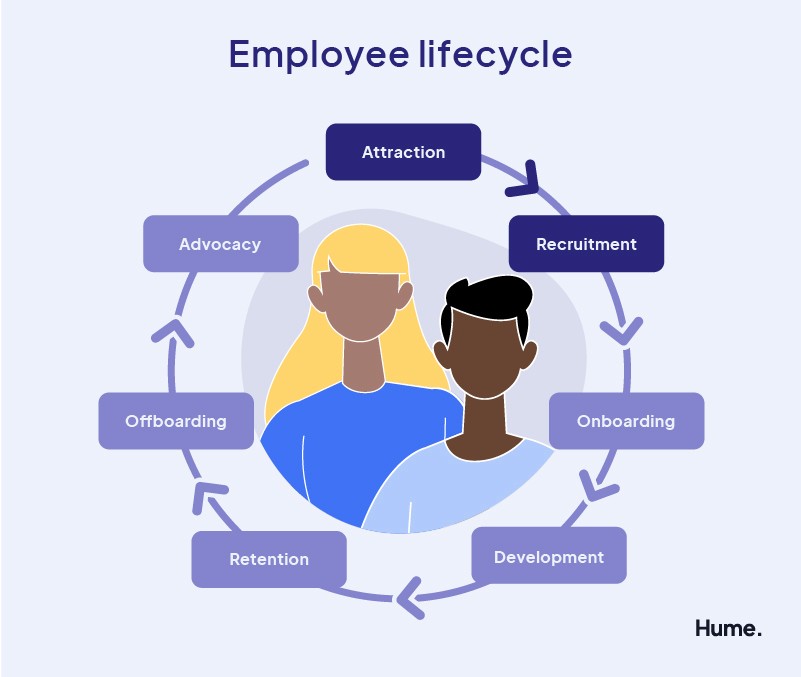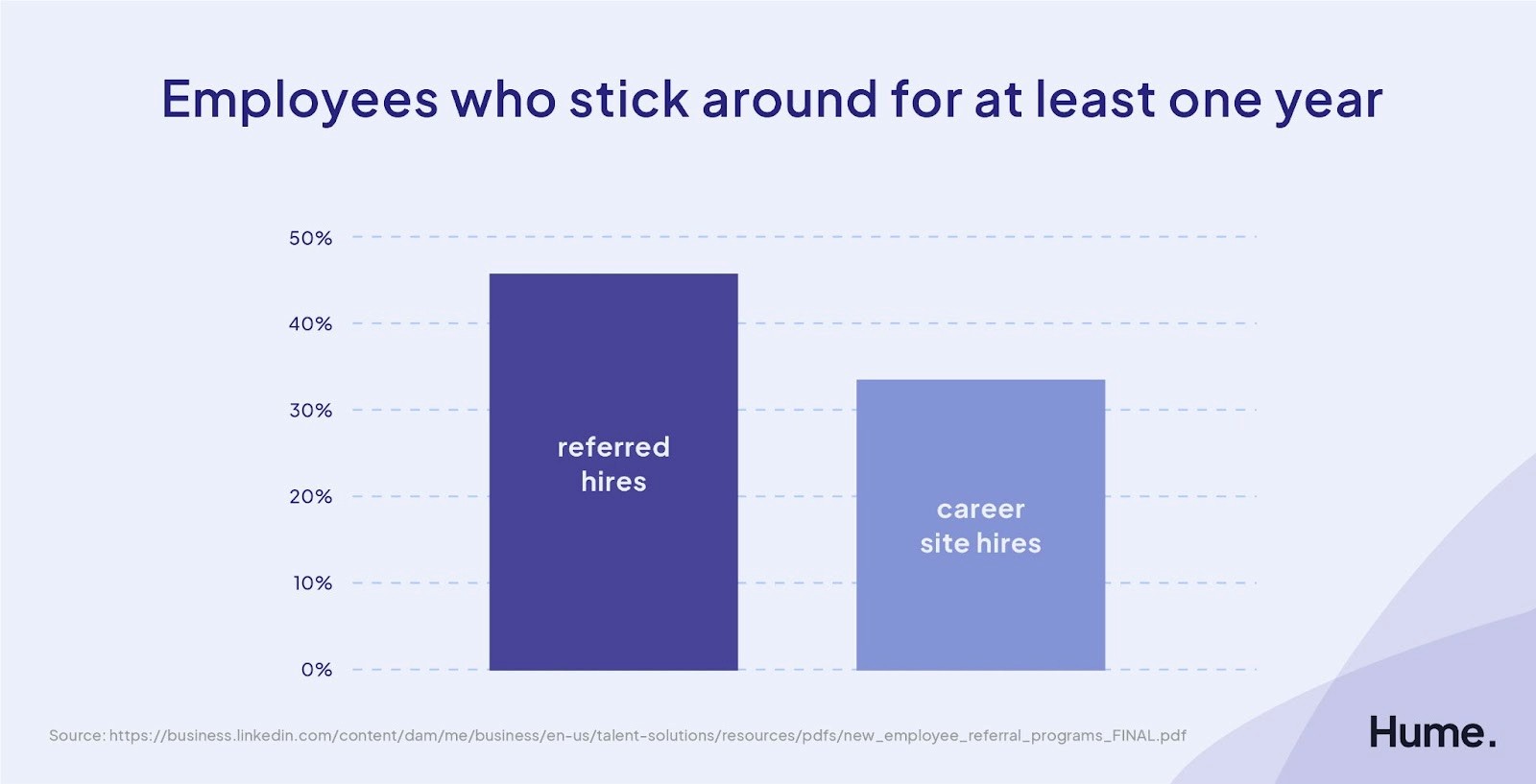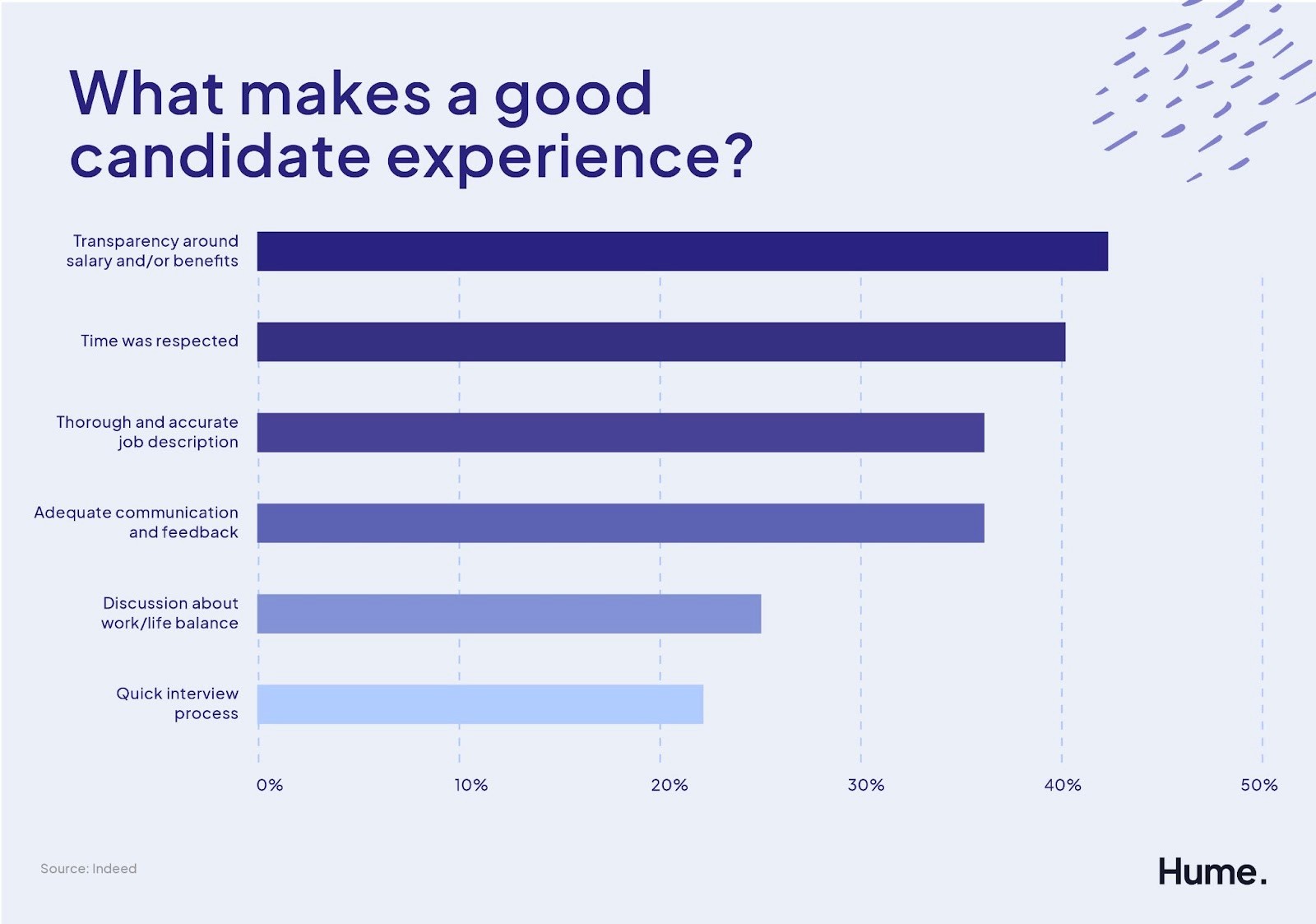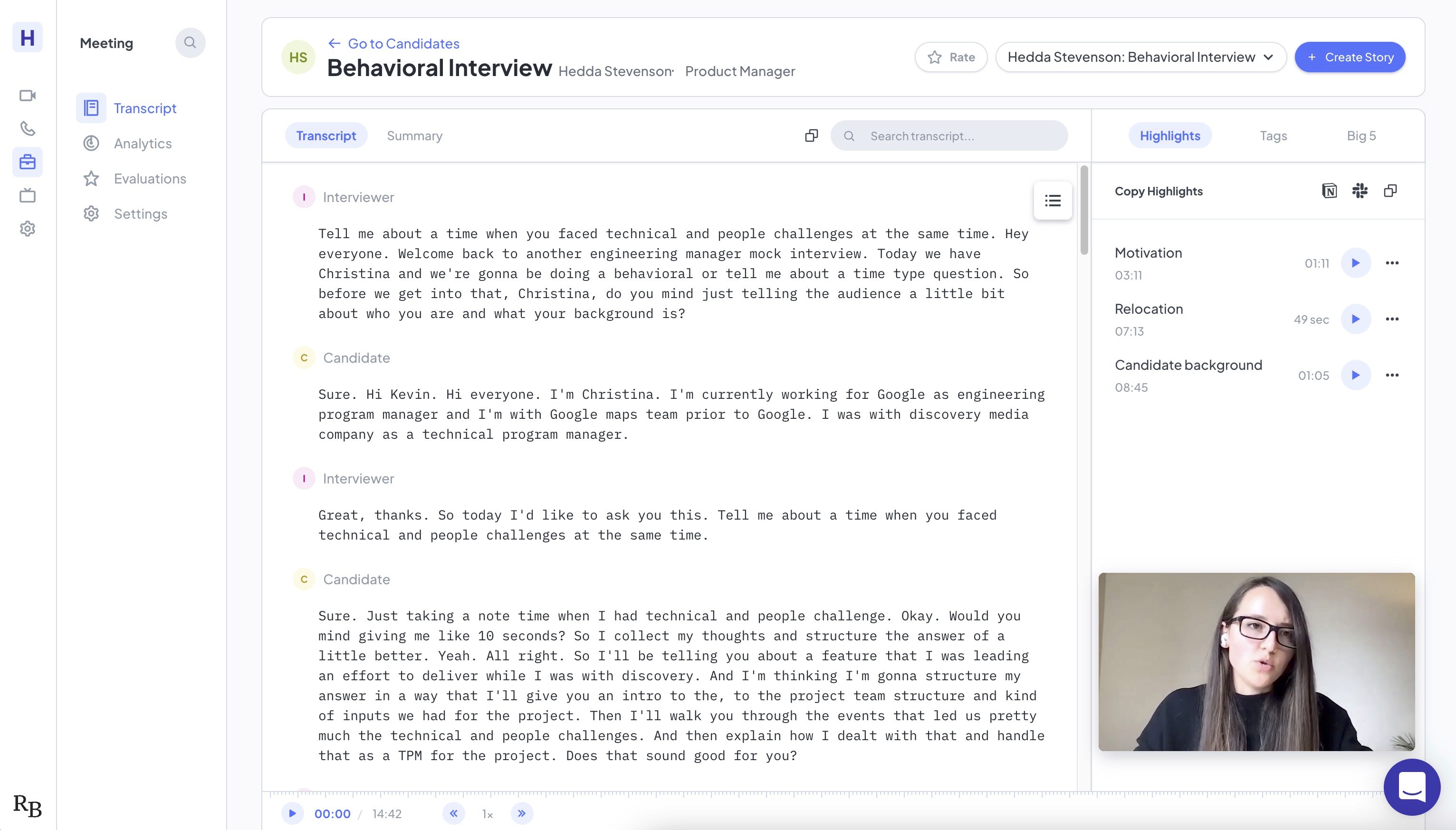Why Is Candidate Experience Important?

2023
It’s no surprise that the pandemic is expected to have a lasting impact on the job market, in various ways.
Hiring professionals have noticed an increased demand for job flexibility, higher wages, and perhaps most of all, a streamlined application and hiring process.
“There's a huge trend regarding the candidate journey,” said John Gulnac, VP at staffing company Adecco. “There’s a lot of focus on how easy we can make it to get through the process.”
If you’re ready to provide a better all-around experience for candidates, keep reading for even more reasons why that’s such an important goal and how to achieve it through approachable tactics.
What candidate experience means
Candidate experience is defined as the collection of interactions a job hunter has with a potential employer over the course of the application process.
Also known as the candidate journey, the candidate experience adds up to how an applicant feels and eventually talks about an employer, whether they’re hired or not.
Why is candidate experience important? 7 reasons
Why is it critical that interviewers, recruiters, hiring managers, and every other type of hiring professional focuses on providing a thoughtful, tailored, and high-quality candidate experience?
There are plenty of vital reasons you should know about.
Set the stage for a successful employee relationship
For applicants that are hired, the candidate experience blends into the first few stages of the employee lifecycle — attraction and recruitment.
In this way, the candidate experience impacts the tone for the employee relationship once they join the team. A good experience has the power to increase retention and lead to quality referrals. A bad one may have opposite effects.

Improve your employer brand
In the age of remote work when applicants are interviewing remotely and working with organizations they’ll never interact with in person, candidates are relying on reviews more than ever before.
Where do you think those reviews come from? People who have gone through the candidate experience and have shared it online, often via company review sites like Glassdoor and Indeed. And how can you shape these reviews to get great candidates through your metaphorical doors? With a favorable and memorable candidate experience.
The candidate journey, and the way potential and eventual employees talk about it, has become a key element of your employer brand in the dispersed work world.
Grow ROI on your hiring process
Any effort to improve the candidate experience should touch many different processes across hiring — recruiting, applying, interviewing, onboarding, etc.
As you streamline and improve each of these areas of your business, you should see increased efficiency and lowered costs. This will in turn improve the return on investment (ROI) on all the resources you put money into to run your various hiring processes.
Attract and retain top talent
In order to hire top talent, you have to be able to not only attract but retain that talent throughout the hiring process. Especially when you consider that, typically, great candidates go off the market just ten days after becoming available.
How can you lock in the best candidates for the length of time you need to evaluate them and make sure they’re the right person for the job? With a great candidate experience that keeps them informed and engaged. A strong candidate experience enables your talent pool to not only grow but become higher quality.
Build a candidate pipeline
Remember that for every candidate you hire for a role, there are several that you will have to turn down. If you're doing it right, these people will fill your candidate pipeline.
A candidate pipeline is a group of people who have shown interest in your company and whom recruiters try to keep in touch with to fill job openings more quickly. The best way to feed this pipeline and keep it healthy is to provide a candidate experience that creates a lasting, positive impression — even when you must reject some applications.
Get more offers accepted
When a candidate gets to the offer stage and chooses not to accept their offer, that’s more than just a bad sign for the candidate experience — it’s a drain on the resources you’ve put into interviewing, background checking, etc.
It’s easy to see the connection between the candidate experience and the offer acceptance rate. Why would anyone choose to work with an organization that provided a less-than-stellar experience — especially when there are plenty other options out there in this market?
In fact, a 2021 report found that almost 60% of job seekers walked away from a job offer due to a bad candidate experience.
In addition to a great candidate journey, a quick one is also pivotal in getting job offers accepted. When a candidate gets an offer within a week of their last interview, they’ve been shown to be 62% more interested in working at your company.
Generate referrals
Referred employees save businesses money on sourcing and productivity, tend to generate a higher ROI, and stay with companies longer when compared to recruited employees.
Want to gain some of these benefits? Then you’ll want to focus on generating referrals from past and current employees, and even candidates.
How? By providing a candidate experience that’s worth remembering and talking to others about. Happiness spreads. When employees and candidates are happy with their experiences, they’re more likely to share a positive referral with their networks.

Signs you’ve created a positive candidate experience
Wondering whether candidates view your experience in a positive light? Here are the features of the candidate experience that job seekers equate to a great journey:
Job expectations are communicated clearly
The application process is easy
The interview experience is equitable
Hiring pros are respectful, and communicative at every stage of the journey
Hiring pros are transparent and available for questions
Employer brand is positive
Hiring progress and pipeline are strong
How to tell if your candidate experience is lacking
There are also signs that you might not be providing the best candidate experience possible, including:
None of your rejected candidates are interested in communicating with you about future jobs (no pipeline)
Online reviews of your hiring process are either nonexistent or not very complimentary
You aren’t getting any referrals from current employees
You find a lot of talent dropped out of your recruitment process, probably because it’s too long
You have a lot of applicants who aren’t a good fit for your roles
Retention is lacking
Great candidate experience matters — here’s how to improve it
If that last section sounds like what your business has been going through lately, don’t worry — here are some tips on how to improve candidate experience.
Get crystal clear in your job descriptions
Hiring pros agree — really, we asked them — that job descriptions are pivotal to creating a hiring experience in which companies and candidates are both happy.
Clear and concise job descriptions set reasonable expectations, allow poor fits to self-select out of the application process while enabling good fits to self-select in, and condense some of the many steps that live between posting a job and filling the role.
A good job description:
Follows an organized layout
Provides a thorough job overview
Is transparent about salary
Mentions duties and responsibilities
Covers important qualifications and experience
Touches on company culture
And more
Learn more about writing job descriptions from the people who do it as part of their jobs.
Make the application process functional yet succinct
You probably won’t be shocked to learn that a CareerBuilder poll found that the vast majority of candidates prefer a one-step application process to a lengthy, detailed one.
Exasperation with the standard application process is fueled by way too many bad experiences — workflows that ask for the same information over and over again, poorly-built tech that doesn’t accept reasonable resume formats, and companies that put candidates through all that trouble just to never respond anyway.
You as an employer have the power to create a better experience — which should increase ROI on the application process, grow your pool of qualified applicants, and build a great employer brand.
How? Simplify.
First, fix any feature that may be broken or just acting in a way that’s limiting applicants. Then, go through the entire process yourself. Any repetitive questions? Eliminate or implement autofill technology to populate information everywhere it’s needed (names and dates are good candidates for this practice). Any super detailed questions that would be better answered in person? Save those for interviews. And of course, create a system, preferably automated, that keeps candidates in the loop on their place in the process. More on this up next.
Communicate with candidates, accepted or not
Here we’re going to hearken back to a grade school favorite, the “golden rule” — which reminds us to treat others the same way we hope to be treated.
If you don’t like to be left in the dark waiting on important news, then don’t leave your own job applicants in the dark!
For many candidates, applying for a new role is taxing. It takes emotional energy as well as physical energy away from their lives and their current job. The least you can do is set up automation within your application system that acknowledges this by thanking them for their application.
And if you can set up that automation, you can set up more. We recommend creating automations throughout the process that notifies applicants about where they are in the journey. This is especially important when applications are removed from consideration, as it sets the stage for a happy and engaged candidate pipeline.
Aside from it being the kind and respectful thing to do, communication is downright necessary to holding the attention of capable candidates. If they don’t hear back about an application in about two weeks, almost 70% of candidates start shifting their focus to other opportunities.
Commit to better employee onboarding
As we mentioned, the employee experience is a critical piece of the overall employee lifecycle. That means, for those who are hired, it goes beyond the application process and extends into onboarding.
Your onboarding experience is your first impression as a brand. Sure, you may still be assessing new hires, but they’re also assessing you.
Here are just some onboarding process improvement tactics to make sure the excellent candidate journey you’ve crafted continues into the onboarding flow:
Start engaging, digitally, the moment your offer is accepted, this mitigates overwhelm and helps make sure hires don’t jump ship for a different opportunity at the last moment
Replace paperwork with digital, automated workflows to save everyone time and trouble
Create a welcoming environment for their first day, which may look like a thoughtful office setup as well as an appointed buddy who can guide them through the nuances of your workplace
Put one-on-one time on their calendar with their direct manager
Establish clear, personalized, written expectations and timelines
Speed up the interview process without sacrificing quality
The main reason candidates end up saying no to job offers? Negative interview experiences.
The problem is that the interview process is often the first to degrade when trying to streamline the candidate experience, because it is often one of the more expensive and time consuming elements.
Which is a shame, because interviews are one of the best tools for building a strong candidate journey that attracts and secures top talent.
This is exactly the reason we created Hume.
Hume is a modern talent intelligence platform that implements artificial intelligence to help interviewers record, transcribe, and summarize interviews.
With Hume, there are no sacrifices required when it comes to interviews. On the contrary, our platform makes it possible to unlock the valuable candidate data generated during the interview process.
How? With Hume in the background, interviewees can focus solely on candidates — not on taking fast, often incomplete notes. And, after the interview is over, this recording can be rewatched, tagged, turned into highlight reels, and shared across your organization.
The benefit of this functionality is many-fold.
First, Hume makes it so that everyone involved in the hiring process has access to the highlights of every interview, so they can compare different candidates based on their answers to the same questions. In this way, Humes brings speed to the decision making process, which can get quite long and complex with remote and hybrid teams.
And, usable interview recordings make it possible to rely on replay, not recall. This is how Hume sets the stage for more accurate candidate reviews, eliminating any possible interview bias.
In addition, Hume can even be used as a coaching platform for talent leaders to operationalize interviewing best practices no matter how far flung your hiring pros are. Just create a playlist of sharable teaching and example videos to shape your team into skilled interview practitioners.

In today’s job market, your candidate experience has the power to become a competitive differentiator.
To create a candidate experience that’s worth showing off, it’s time to start writing thoughtful job descriptions, streamlining the application process, implementing a communication strategy, committing to employee onboarding, and last but not least building a fast yet high-quality interviewing workflow.
To make that last one achievable, use Hume to add automation into the critical interviewing process.
For early access to Hume’s platform, sign up for the waiting list on our homepage. In the meantime, follow Hume on LinkedIn for news and updates.




